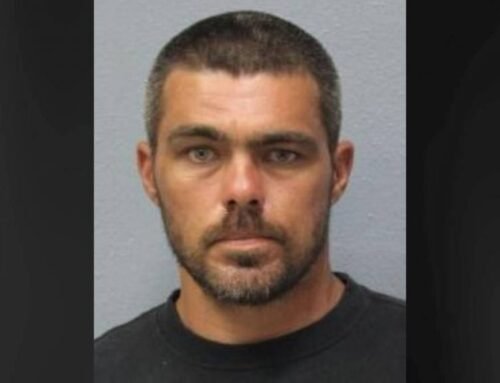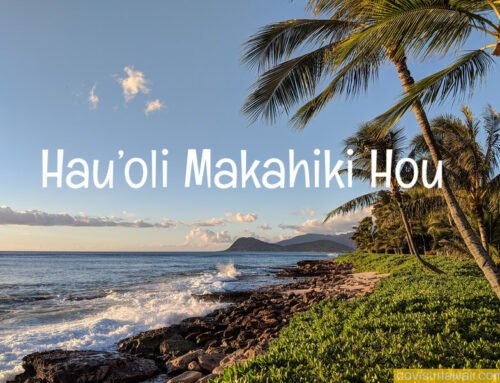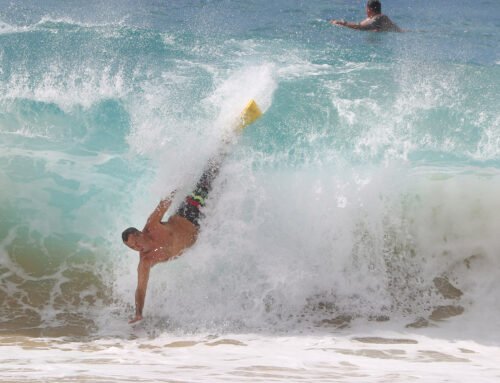Damon Johnson is getting another shot at life. This time it’s on Maui, in a new and rapidly expanding shelter complex.
The 45-year-old Las Vegas man used to make his living repossessing cars, driving tow trucks and detailing boats and autos.
But Johnson fell deeply into despair, feeling no one in the world cared about him.

On April 11, 2012, the Nevada resident put a gun in his mouth. “I said, ‘God forgive me,’ and I pulled the trigger.”
Johnson opened his mouth wide to show a reporter where the bullet entered and exited his palate.
The former repo man miraculously survived. But homelessness followed his medical recovery.
Along the way, Johnson struck up a friendship with a Hawaii resident and followed an inkling to move to Maui.
Johnson arrived on island on July 7, finding his way to Ka Hale A Ke Ola, a homeless shelter and resource center in Lahaina. Like thousands of others, Johnson’s life was upended by the inferno that engulfed Lahaina on Aug. 8, killing at least 98 people, displacing thousands and destroying the historic, seaside community.

Grateful to have been spared, Johnson is tapping into newfound spirituality. He plans to be baptized into the Church of Latter-day Saints later this month.
He’s also starting over at Pu’uhonua o Nene, a newly opened homeless shelter and navigation center that consists of military-style field tents near the entrance of Kahului Airport, at the busy intersection of Hana Highway and Mayor Elmer F. Cravalho Way.
Church members steered him there.
“I see this as being a piece of heaven,” Johnson said, standing in a sliver of shade along a chain-link fence that encircles the place.

Pu’uhonua o Nene opened its gates on Sept. 29, hours before a safe harbor period closed for a segment of fire survivors staying in hotel rooms provided by FEMA and the American Red Cross. People deemed ineligible for shelter assistance were told they had until the next morning to gather their belongings and clear out.
At midday on that last Friday in September, Darrah Kauhane was busy inside one of the tan-colored field tents making last-minute preparations for incoming guests.
Kauhane directs Project Vision Hawaii, a nonprofit based on Oahu that provides statewide health and human services to vulnerable populations.
“We knew that the safe harbor period was ending,” Kauhane said. “One of the main concerns for some people is, ‘Where am I going to go?’
To stay in one of the roughly 35 hotels housing over 7,000 fire survivors, people have to prove they suffered a “verified structural loss.” Citizenship or immigration status are not considered.

But families and individuals who were homeless pre-disaster are ineligible for FEMA or Red Cross housing.
Knowing that dozens and possibly many more people would need somewhere to go after the safe harbor period expired, Project Vision Hawaii, along with the Department of Human Services, other state agencies, and community groups such as Maui Rapid Response and Maui Medics Healers Hui scrambled to set up a shelter.

Pu‘uhonua o Nene serves adults with no minor children. It currently houses 90 people and can take in 150, said Bob Wardlaw, director of social services for Project Vision Hawaii.
Each person may have two pets. Clients receive three meals a day, medical and mental health care, wrap-around services and case management.
Up until this week, Pu‘uhonua o Nene only accepted homeless fire survivors, said Sara Campos, a public information officer for the Department of Human Services.
That changed on Tuesday when Pu’uhonua o Nene began taking in anyone without a permanent home. Thirty new clients arrived on Tuesday, filling up all the beds available for men, Wardlaw said.
That might be welcome news to people like Ron Hoilien, 71, who was turned away from Pu‘uhonua o Nene on Sept. 29.
Driving a U-Haul van where he planned to sleep that night before turning it, Hoilien said he understood that fire victims must come first. But Hoilien, who is under investigation for negligent homicide in a fatal traffic collision, wasn’t sure where he would go after returning the U-Haul.
Kauhane said Hoilien was given information about other shelter options.
Pu‘uhonua o Nene shelter sprung up quickly on a plot of state land, owned by the Department of Transportation, across from the Kahului airport, fleets of unused rental cars visible in the distance.

A month ago, the land was hilly and grass-covered. But with the safe harbor deadline rapidly approaching, Department of Human Services’ officials asked DOT colleagues if they had any land to spare for temporary, and possibly long-term, emergency housing.
Transportation Director Ed Sniffen agreed to let the parcel across from the airport be used and had workers pave and gravel the site, said Joseph Campos, DHS deputy director, in an interview on the day the shelter opened.
“It’s a place to give people options,” Campos said in the parking lot. Media are not allowed to enter the shelter premises.

Ultimately, the 20 or so field tents will be replaced with sturdier structures and the site may end up becoming a permanent shelter and resource hub for homeless residents as they navigate their recovery, said Kauhane.
“It’ll be up to the community to decide,” she said.
A garden plot awaits for those who would like to grow food.
“Aina-based work is a huge part of healing,” Kauhane said.
Whether the busy location is suitable for the long-term remains to be seen.
Rick Nava is among those who has doubts.
A U.S. Army veteran, retiree and community leader, Nava sits on Maui Mayor Richard Bissen’s five-person Lahaina Advisory Team. He’s also past president of the Rotary Club of Lahaina and West Maui Taxpayers’ Association, as well as past chairman of Maui Chamber of Commerce board of directors.

When he first saw the field tents, Nava thought to himself: “Couldn’t they have found a better place?”
The space is wide open, treeless, in view of passing cars, and subject to thunderous jet noise from the airport, Nava noted.
“I hope they come up with a better location to give them a bit of decency. This is Hawaii. It’s heartbreaking to see,” he said.
Bill Jackson, 63, is among those staying at Pu’uhonua o Nene and, like Johnson, he’s happy to have found an air-conditioned tent, meals, medical care and support people to help him get his life back on track.
Originally from California and raised in a military family, Jackson said he ran his own business, Harvest Fund Consulting, which specialized in raising money for nonprofits.
His life was all about work and chasing capital. Eventually he tired of the grind and sought an off-ramp. About 14 years ago, Jackson vacationed on Maui and ended up staying. But poor decisions followed.

He started taking drugs after a surfing accident that left him in chronic pain, Jackson said.
He’s been clean for a few years but Maui’s expensive housing market forced him out onto the streets. When fire raced through Lahaina on Aug. 8, Jackson jumped into the ocean at the rear of Cheeseburger in Paradise restaurant.
The fire was a wake-up call, he said.
Jackson hopes to take advantage of all the services Pu‘uhonua o Nene has to offer. He plans to start helping out with construction happening at the shelter, although he admits he’s not too good with a hammer and nails.
More likely, he’ll pursue where his strengths lie.
“My gift is raising money,” Jackson said.
Civil Beat’s coverage of Maui County is supported in part by a grant from the Nuestro Futuro Foundation.
Civil Beat’s community health coverage is supported by the Swayne Family Fund of Hawaii Community Foundation, the Cooke Foundation, Atherton Family Foundation and Papa Ola Lokahi.







Leave A Comment